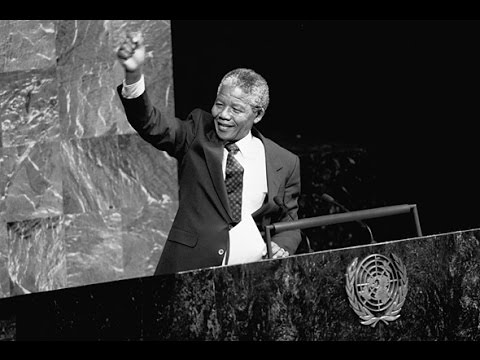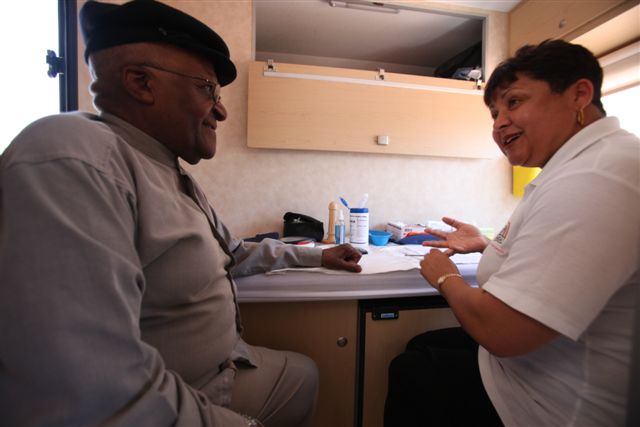Tuberculosis (TB) knows no boundaries and can affect all people regardless of age, gender or social status. Two of Africa’s most powerful icons, Nobel Prize winners Nelson Mandela and Desmond Tutu contracted this disease, and survived. Their personal triumph gives hope to millions of people around the world that TB is treatable – and completely curable.
Archbishop Emeritus Desmond Tutu

Archbishop Emeritus Desmond Tutu is one of Africa’s most iconic figures.
In 1945, Tutu began his secondary education at the Western High, a government school in the old Western Native Township near Sophiatown, Johannesburg. It was around this time as a teenager that he became very ill with Tuberculosis and was hospitalised for over a year.
Despite falling behind at school because of his illness he persevered, often having to study by candlelight, and passed his final year matric exams at the end of 1950.
Within South Africa, he now devotes his time with the Desmond Tutu HIV Foundation on HIV treatment, prevention, training and Tuberculosis treatment monitoring in the hardest hit communities.
Archbishop Tutu highlighted the urgency of the epidemic when he called on the world to unite against TB:
We call on the international community, which was so tremendous in its fight against another epidemic, apartheid, to show the same commitment to deal with TB and HIV/AIDS.
Nelson Rolihlahla Mandela

Former President of South Africa, Nelson Mandela was a very fit and strong man. He spent a lot of his spare time long-distance running and boxing. He also spent 27 years in prison doing hard labour in the stone quarries on Robben Island during apartheid.
While Mandela was imprisoned he contracted Tuberculosis. On 12 August 1988, nearly a month after his 70th birthday, Mandela was admitted to Tygerberg Hospital in Cape Town for treatment of fluid on the lungs. Here it was discovered Mandela had contracted TB, and had to remain in hospital for six weeks. From there he was moved to Constantiaberg Medi-Clinic where he received treatment. After spending more than three months in the two hospitals he was transferred on 7 December 1988 to a house at Victor Verster Prison near Paarl where he spent his last 14 months of imprisonment.
At the 2005 International AIDS Conference, Mandela confronted his personal struggle with the epidemic.
I was in jail when they took a specimen of my sputum and sent it to hospital. I was diagnosed with TB. When the report came back from hospital they indicated that fortunately we sent the specimen before there were holes in the lung. It would take only about four months to cure the TB if I treated it correctly. I went to my friends in prison, Walter Sisulu and others, and told them that I was found to have the TB germ. There were long faces drawn. My friends objected to me sharing my personal affairs. But I consoled them and told them that the doctors and hospital staff knew about my status and I therefore had no reason to hide this information from those close to me. I underwent treatment and was completely cured after four months.
Fortunately for Mandela, he was treated and cured. Mandela believes that it was vital for TB survivors and advocates to step forward and share their stories, to tell the world about TB and the effect it has on so many millions of people.
Join ONE today to be part of the movement that is fighting to stop TB and other preventable diseases!
